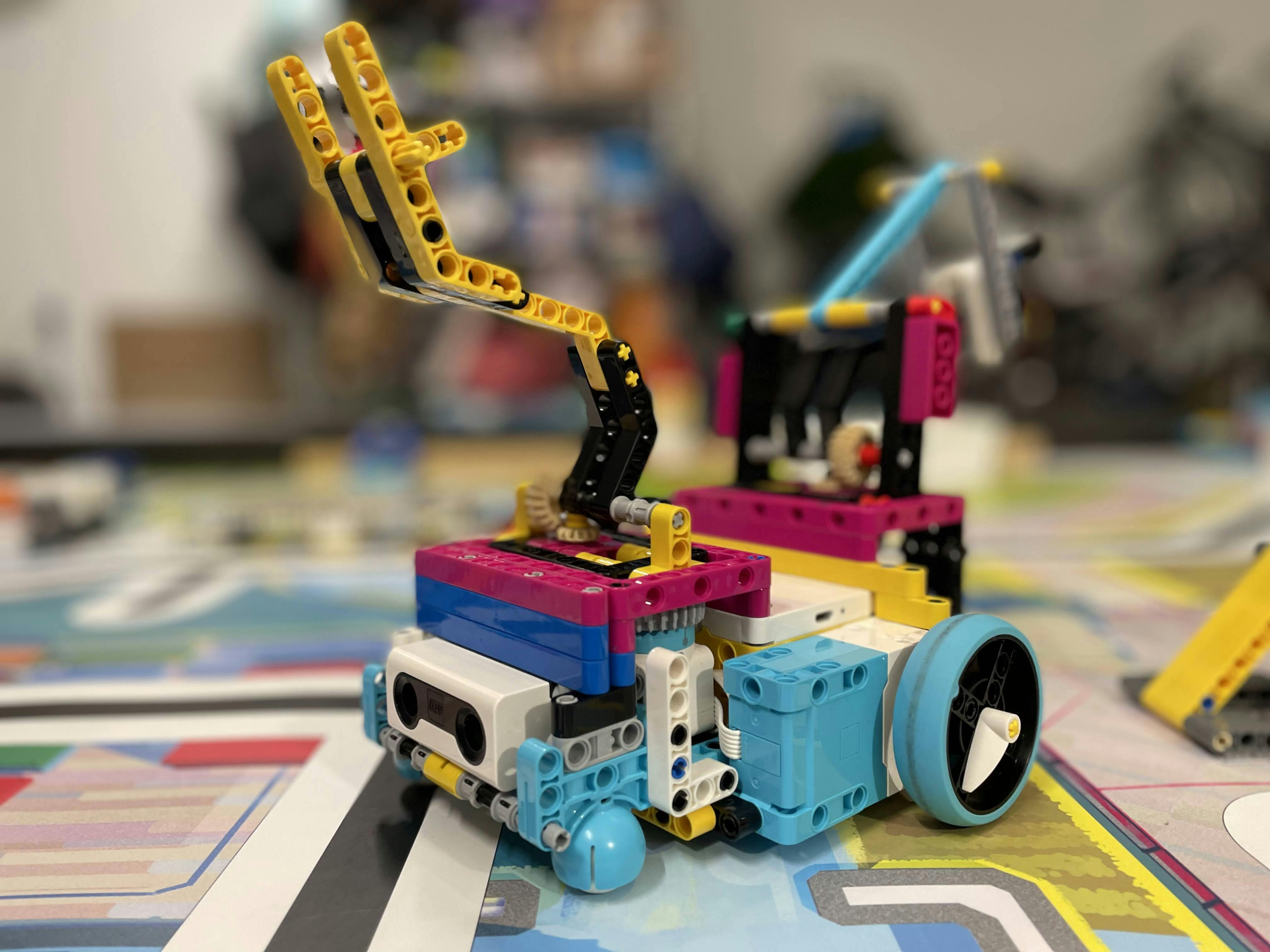Skip to content




 Reliability > Point Scoring: While it seems like the robot game should be about getting max points, it’s actually more about reliability. Game day will always throw new things at you - a new set of tables, different game setups, and nervous robot operators. Make sure to spend as much of your time in testing as you do in building. Have a dedicated board setup, and keep it clean: While it’s technically possible to run a team without a dedicated game setup, we don’t recommend it. It’s a hassle, but usually one person on the team has to volunteer part of a room or garage to setup the game board. Also, working with Legos and trying to solve complicated tasks is not an easy feat, make it easier on yourself by decluttering to hone in your focus at the task at hand. Get plenty of Legos: Do you have the right Legos for your team? We’ve talked to dozens of teams, and one of the places they get stuck is that they simply don’t have the right pieces to get started. We’ve found that the official Lego Spike Prime/EV3 kits are awesome, but they are not enough. Teams are then forced to live on Bricklink and other sites, acquiring pieces as they need them. If you get stuck on this, message us at and we’ll help advise you on the pieces you’re most likely to need. Focus on “Points per Second” and don’t forget swap time: The 2.5 min time limit is a real constraint, most teams use all of it. As you plan out your routes, keep track of how long they take and then divide points by seconds. It’s often better to solve less tasks but much faster, and then leave the time for another task. Also, between routes, you’ll often have to change attachments or operators. This can take 15-20 secs (the fastest we’ve ever done a swap is ~5 seconds) so think through where you will place these. Develop a good route plan early: Developing a good route plan is important for many reasons. It’s the best way to maximize Points per Second. It’s also the easiest way to split up work. We built a tool on to help you do this.Decide how to split up work: There are usually two ways that teams split up work: either hardware/software or by route. We have personally found it better to split by route as it gives everyone a bit of a chance to work on both hardware and software. You can also rotate these responsibilities in the middle of the season. Backup your code: Losing your code can feel devastating. And you’ll often make a bunch of changes that don’t work and feel the need to revert to whatever was working before. You can do this lots of ways - save the file with different date/time stamps, or if you’re using Python, then you can paste code into this doc or setup Github. You can leave things on the board: This is one of the secrets that all advanced teams know, but the rules don’t really make clear how powerful it is. You can solve tasks with attachments that get left behind on the board. That said, read the rules VERY carefully - some tasks are clear that the equipment can be left on the board but not touching the tasks. Learn from others: The FLL community is a very open community. Many teams post their runs and solutions on YouTube (try just searching for ). You should also join the - a lot of the judges hang out there and can give you good guidance.
Reliability > Point Scoring: While it seems like the robot game should be about getting max points, it’s actually more about reliability. Game day will always throw new things at you - a new set of tables, different game setups, and nervous robot operators. Make sure to spend as much of your time in testing as you do in building. Have a dedicated board setup, and keep it clean: While it’s technically possible to run a team without a dedicated game setup, we don’t recommend it. It’s a hassle, but usually one person on the team has to volunteer part of a room or garage to setup the game board. Also, working with Legos and trying to solve complicated tasks is not an easy feat, make it easier on yourself by decluttering to hone in your focus at the task at hand. Get plenty of Legos: Do you have the right Legos for your team? We’ve talked to dozens of teams, and one of the places they get stuck is that they simply don’t have the right pieces to get started. We’ve found that the official Lego Spike Prime/EV3 kits are awesome, but they are not enough. Teams are then forced to live on Bricklink and other sites, acquiring pieces as they need them. If you get stuck on this, message us at and we’ll help advise you on the pieces you’re most likely to need. Focus on “Points per Second” and don’t forget swap time: The 2.5 min time limit is a real constraint, most teams use all of it. As you plan out your routes, keep track of how long they take and then divide points by seconds. It’s often better to solve less tasks but much faster, and then leave the time for another task. Also, between routes, you’ll often have to change attachments or operators. This can take 15-20 secs (the fastest we’ve ever done a swap is ~5 seconds) so think through where you will place these. Develop a good route plan early: Developing a good route plan is important for many reasons. It’s the best way to maximize Points per Second. It’s also the easiest way to split up work. We built a tool on to help you do this.Decide how to split up work: There are usually two ways that teams split up work: either hardware/software or by route. We have personally found it better to split by route as it gives everyone a bit of a chance to work on both hardware and software. You can also rotate these responsibilities in the middle of the season. Backup your code: Losing your code can feel devastating. And you’ll often make a bunch of changes that don’t work and feel the need to revert to whatever was working before. You can do this lots of ways - save the file with different date/time stamps, or if you’re using Python, then you can paste code into this doc or setup Github. You can leave things on the board: This is one of the secrets that all advanced teams know, but the rules don’t really make clear how powerful it is. You can solve tasks with attachments that get left behind on the board. That said, read the rules VERY carefully - some tasks are clear that the equipment can be left on the board but not touching the tasks. Learn from others: The FLL community is a very open community. Many teams post their runs and solutions on YouTube (try just searching for ). You should also join the - a lot of the judges hang out there and can give you good guidance.

 Robot Game
Robot Game
Information that could be helpful as we figure out what a Robot Game is and how to play this game well!
Robot Work Items
Make a list of things you want to complete with your team.
Robot Brainstorming
Brainstorm ideas for ways to solve tasks.
Robot Design Considerations
Robot Route Plan
List your routes and track your points.

Robot Presentation
This is where you can put questions to practice before the judging session.


The robot game is a pretty complex part of FLL, so here are a few robot specific tricks that will help lead you to success!
Want to print your doc?
This is not the way.
This is not the way.

Try clicking the ⋯ next to your doc name or using a keyboard shortcut (
CtrlP
) instead.